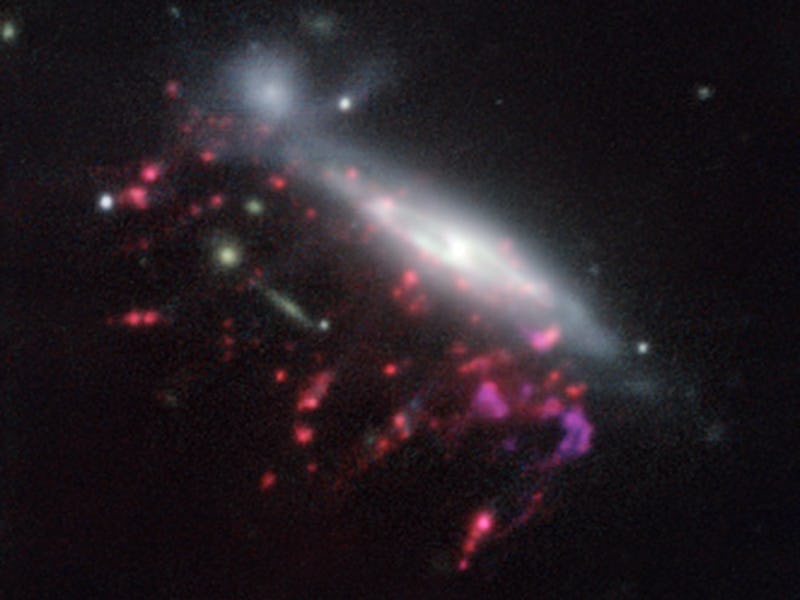Astronomers Gawk at Supermassive Black Holes in the Middle of a Feast
Cosmic jellyfish are just prey in space.

In space, no one can hear you scream — even if you’re a jellyfish galaxy getting torn tentacle from tentacle and devoured by a supermassive black hole. That’s not really an exaggeration — that’s actually what’s happening in the universe right now, according to new results published Wednesday in Nature.
An Italian-led group of astronomers using the European Southern Observatory’s Very Large Telescope (VLT) in Chile were trying to observe how cosmic gas can be stripped from galaxies, particularly in jellyfish galaxies, which are named after the extremely long “tentacles” of space material they exhibit. These tentacles can sometimes stretch out for thousands of light-years beyond the galactic discs. It has never been quite clear how these objects manage to stay together and remain so bright.
Well, the researchers now think they have figured out how. The tentacles aren’t stretching outward and being expelled from the supermassive black hole at the center of the jellyfish galaxies. Rather, they are formed by gas and dust being pulled in. These latest observations suggest a new theory for how black holes are active and how they’re kept fed.
The astronomers found six of the seven jellyfish galaxies they were observing hosted a supermassive black hole in the center that fed on the surrounding gas. “The central black hole is being fed because some of the gas, rather than being removed, reaches the galaxy center,” said team leader Bianca Poggianti from the INAF-Astronomical Observatory of Padova in Italy, in a news release.
“These MUSE [the VLT instrument used in this study] observations suggest a novel mechanism for gas to be funneled towards the black hole’s neighborhood,” said study co-author Yara Jaffé in a news release. “This result is important because it provides a new piece in the puzzle of the poorly understood connections between supermassive black holes and their host galaxies.”
Ultimately, besides the study yielding some wicked cool imagery, the observations are yet another small step in understanding the origins of how galaxies, stars, planetary systems, and planets form. “A long-standing puzzle in astronomy has been to understand how galaxies form and change in our expanding and evolving universe,” said Poggianti. “Jellyfish galaxies are a key to understanding galaxy evolution as they are galaxies caught in the middle of a dramatic transformation.”